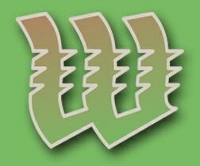The Mushroom Hunt is On!
Oana:
Taking a forest walk has always been a pleasure, but now that I say, “I'm going mushroom-hunting!” I hold a new purpose to wandering about in the woods. Hunting, to me, does not imply victory, and returning empty-handed is not a waste of time upon return. I have been exploring, and my knowledge of the hidden land has grown. The search is what is important.
Why do I search? Well, besides giving me another excuse to go tromping around in the woods, I hope to grow a fungal understanding of the Windward forest, particularly the area designated as the Herland Forest Natural Burial Cemetery. I hope to catalogue the variety of fungi taking up residence here. This includes the colorful lichen clinging to branches, strange white saprophytic fungi emerging from the pine-oak duff, as well as mycorrhizal and parasitic fungi which create mushrooms to spread their spores. I have begun with the most ephemeral: the mushrooms.
Mushrooms are the fruiting body of a living organism called the mycelium. What we see above ground as a mushroom is merely a glimpse of the vast mycelial webs spread out beneath the soil. Next time you go outside, particularly in a forested area, dig a few inches into the leaf litter to encounter a web of thin white strands. To most people it would look, perhaps, like mold. What you see there is mycelium. I'd like you to imagine that what you hold in your hand at that moment is actually underneath the soil... everywhere! (Except maybe the oceans? Who knows!) It pretty much blows my mind.
So, with this vast mycelial web underneath your feet as you read this, I'd like you to reflect on a few more things: one, that fungi are more closely related to animals rather than plants from an evolutionary standpoint. (Wait – really? Yup.) And two, that like you and me, mycelia want to grow and reproduce. (Surprise, surprise.) How do mycelia do that?
I've heard a picture is worth a thousand words, so let's see how true that is:
I thought you might also like to see some samples back from my exploratory journeys:
These are the gills of a Blewit (Clitocybe nuda). It is indeed lilac-tinged, and smells delicately like frozen orange juice.
This is a Shaggy Parasol (Lepiota rachodes). A bunch of them were growing underneath the raspberry bush.
This is a mushroom that looks awesome. Who cares what it's called?
This is but the beginning of exploring this hidden land. It is an ever-developing process, so, soon, I will strive to explain the next step: how I go about identifying these fungal wonders.
In the meantime, I encourage you to go on your very own foray. Pack a camera and a peanut-butter sandwich. (Don't be eating what you find!) Pick a crisp, sunny afternoon. Peek under leaves that look promising. Let your eyes be drawn to shadows and colors that don't quite belong. Notice the types of trees and the moisture in the air. Get down on your knees and look carefully. Use your sense of smell. Listen.
Upon your return, make sure to excitedly tell someone about your marvelous expedition!
